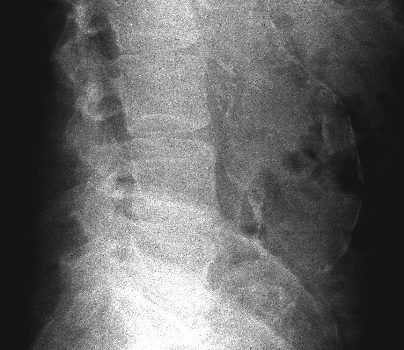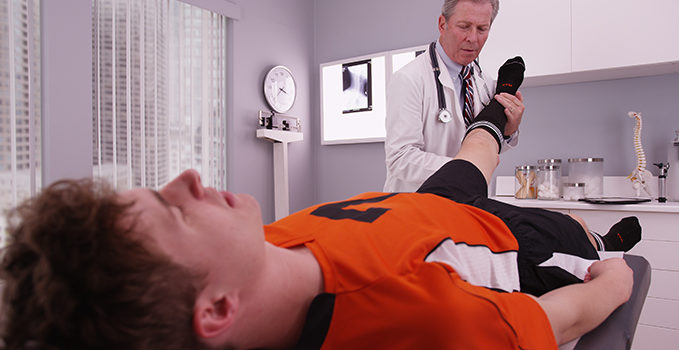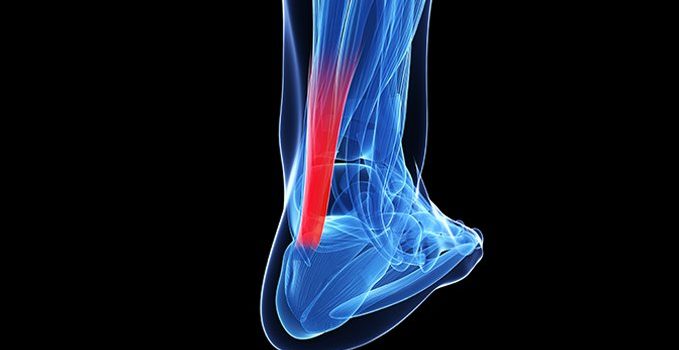Consider Vitamin D Supplementation for Patients Prone to URIs Key point: Vitamin D supplementation was both safe and protective against acute respiratory tract infection. Citation: Martineau AR, Jolliffe DA, Hooper RL, et al. Vitamin D supplementation to prevent acute respiratory tract infections: systematic review and meta-analysis of individual participant data. BMJ. 2017;356:i6583. An ounce of prevention would definitely be a good idea when it comes to upper respiratory infection. With the currently limited treatments for …
Read MoreAn 18 Month-Old-Boy with Vomiting
In Bouncebacks, we provide the documentation of an actual patient encounter, discuss patient safety and risk-management principles, and then reveal the patient’s bounceback diagnosis. This case is from the book Bouncebacks!, available at www.anadem.com and www.amazon.com. History of Present Illness John is a healthy 18-month-old boy. One morning shortly after Christmas, he awoke with cough and congestion. After breakfast, he had an episode of vomiting. Though his symptoms remained mild over the next 3 days, …
Read More
A Multimodal Intervention to Reduce Antibiotic Use for Common Upper Respiratory Infections in the Urgent Care Setting
Urgent message: Upper respiratory infections (URIs) are the most common presenting complaint in urgent care. Regardless of etiology or provider specialty, antibiotics are prescribed 60% of the time for the treatment of URIs, contributing to drug-resistant respiratory organisms. Employing a multimodal intervention, the authors we were able to appreciate a modest, statistically significant decrease in the rate of antibiotic prescribing among urgent care providers. Introduction Antimicrobial resistance is arguably one of the greatest risks to …
Read MorePatient Satisfaction: The Redirection Game
In my previous column, I discussed the challenging issue of patient satisfaction and the provider behaviors that can contribute to poor service experiences. In this month’s editorial, I will pivot the discussion to the patient profiles and behaviors that can trigger negative interactions and poor service reviews. While most of us understand the importance of “customer service” in healthcare, we do not always dedicate ourselves to understanding the common traps and landmines that lead to …
Read More
Dull, Constant Back Pain After a Fall: Abdominal Aortic Aneurysm (AAA)
Case A 67-year-old male presents with acute mid-low back pain following a fall. He describes the pain as “dull and constant.” When asked if the pain is worse with range of motion, he replies, “I think so.” Physical exam reveals he is afebrile, has a pulse of 102, respirations 20, and blood pressure 122/78. His abdomen is soft and nontender without rigidity, rebound, or guarding; there is no bruising or distention. His back appears normal, …
Read More
Acute Compartment Syndrome—An Urgent Care Review
Urgent message: Acute compartment syndrome (ACS) is an important high-risk diagnosis to exclude when evaluating peripheral extremity injury. Providers must maintain a high clinical index of suspicion with careful attention to the history and mechanics of injury in an urgent care setting to preclude the devastating, rapidly developing sequela of ACS. Missing a case of ACS may result in significant morbidity—and even mortality. Awareness of both subtle and overt signs will ensure the best care …
Read More
An Uncommon Mechanism for Work-Related Total Achilles Tendon Rupture
Urgent message: This is a really big deal to urgent care clinicians and operators. Introduction Achilles tendon (AT) ruptures account for approximately 40% of all operative tendon repairs.1,2 With 18 ruptures per 100,000 people, it is the most frequently ruptured tendon—and the incidence of AT ruptures has been steadily increasing over the past few decades.1–4 Typical patients include athletic males between the ages of 30 and 50.3 Because the AT is the strongest, yet most …
Read MoreAbstracts in Urgent Care – April 2017
Lessons from Recent Terrorist Attacks Key point: Investment, integration, standardization, and focus on translating military knowledge. Citation: Goralnick E, Van Trimpont F, Carli P. Preparing for the next terrorism attack: lessons from Paris, Brussels, and Boston. JAMA Surg. 2017 Jan 25. [Epub ahead of print] This viewpoint article in JAMA Surgery sheds light on the need for a more global concerted effort to gather and share lessons from recent terrorist attacks such as those that …
Read MorePatient Satisfaction: A Collaborative Approach
Patient satisfaction surveys have driven a contentious wedge between management and clinical teams. While management is tasked with ensuring the practice is addressing patient needs and evolving consumer demands, providers are far more concerned with doing the right thing clinically (satisfaction be damned). However, with patient expectations changing, access to care improving, and practice economics eroding, we have to find a way to bridge this issue or we will quickly find ourselves locked in counterproductive …
Read MoreHey, Mr. Tax Man!
It’s tax time again and that got me thinking. And thinking got me angry. And angry got me belligerent. And belligerent got me nowhere. So, I went back to thinking about it, and here’s my take: Taxes are the contributions we make to society and the government so that it functions reasonably well, preserves our fragile democracy, and supports those who need our help. Yet, as a physician in a primary care specialty, like many …
Read More